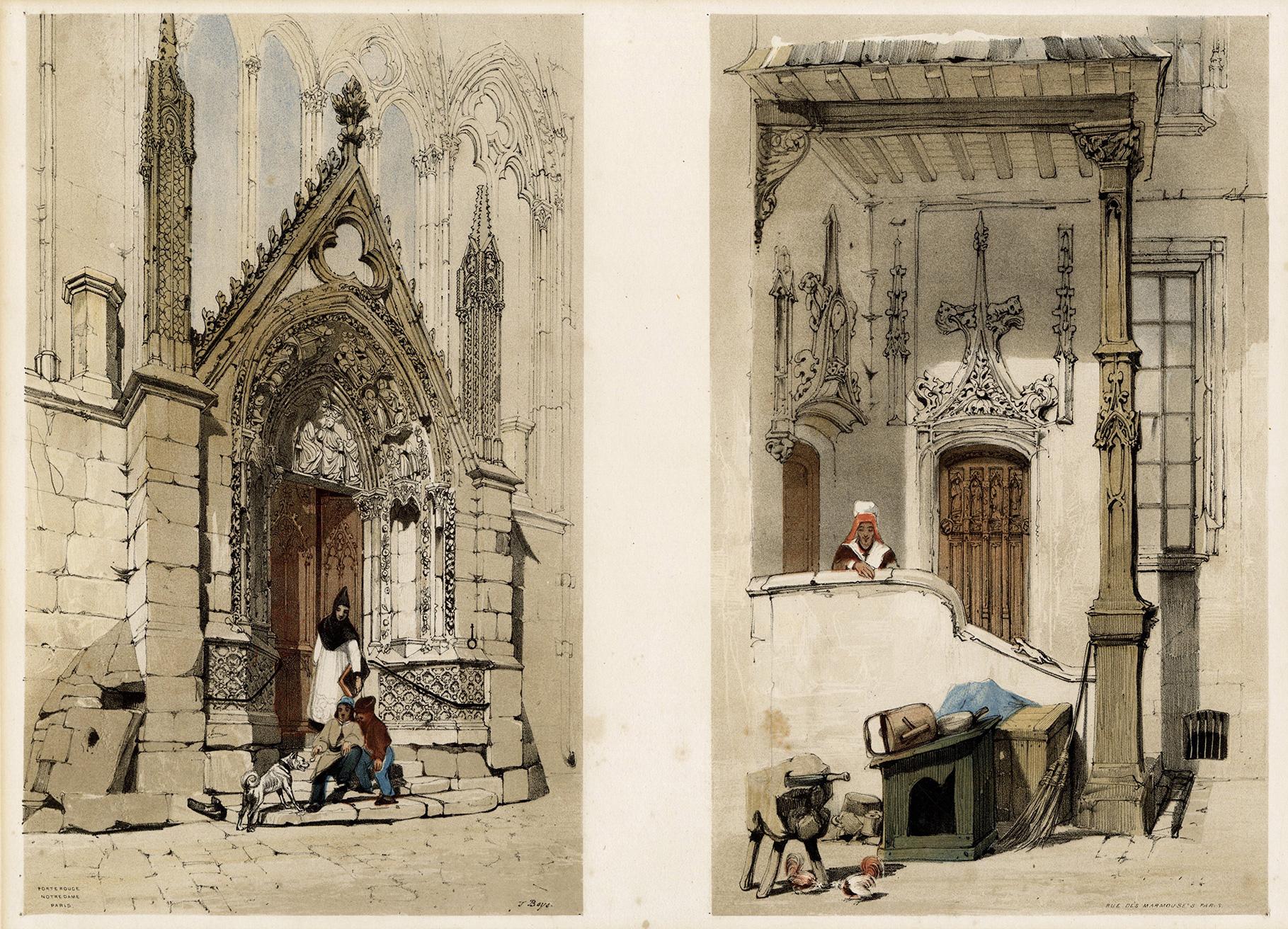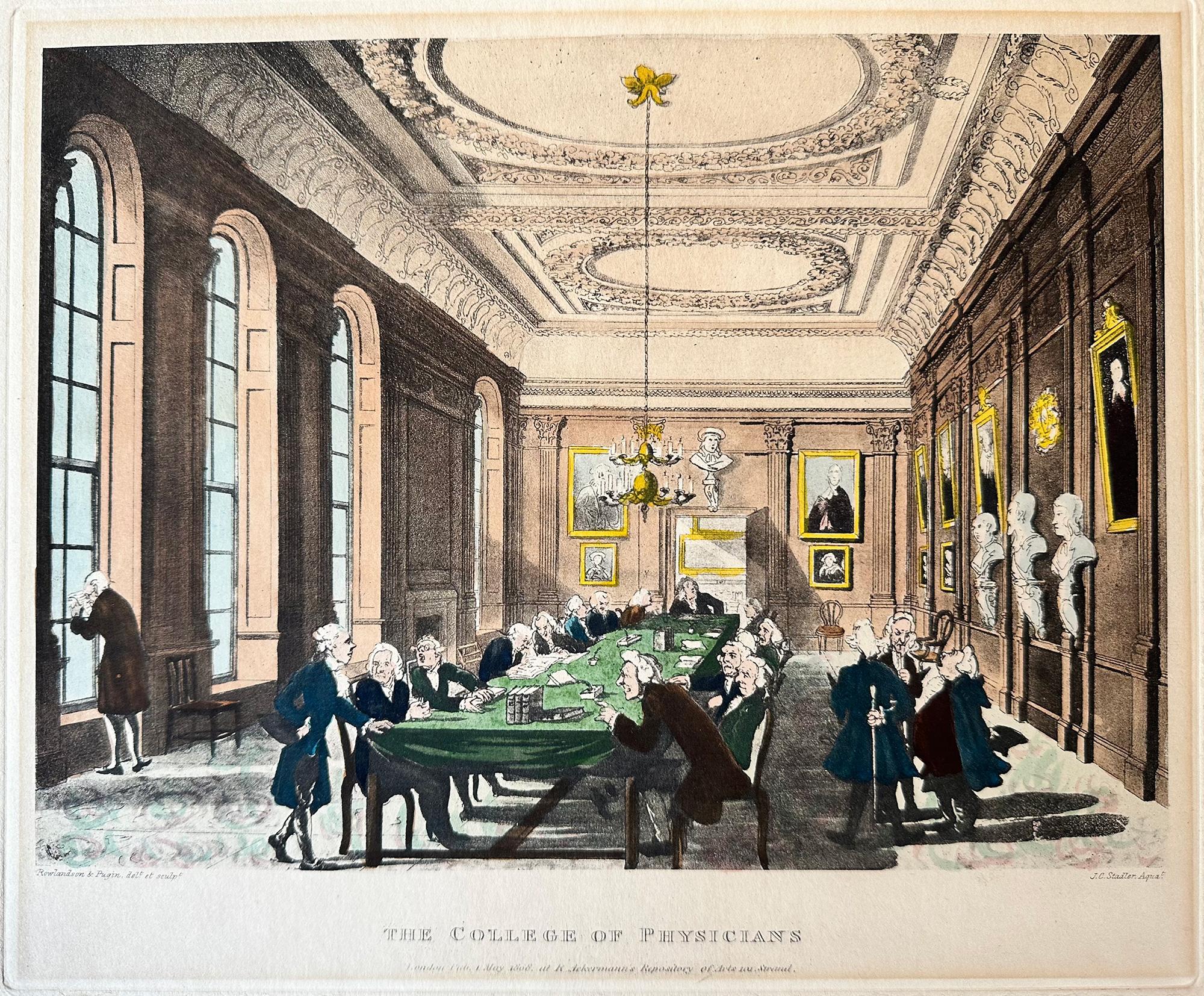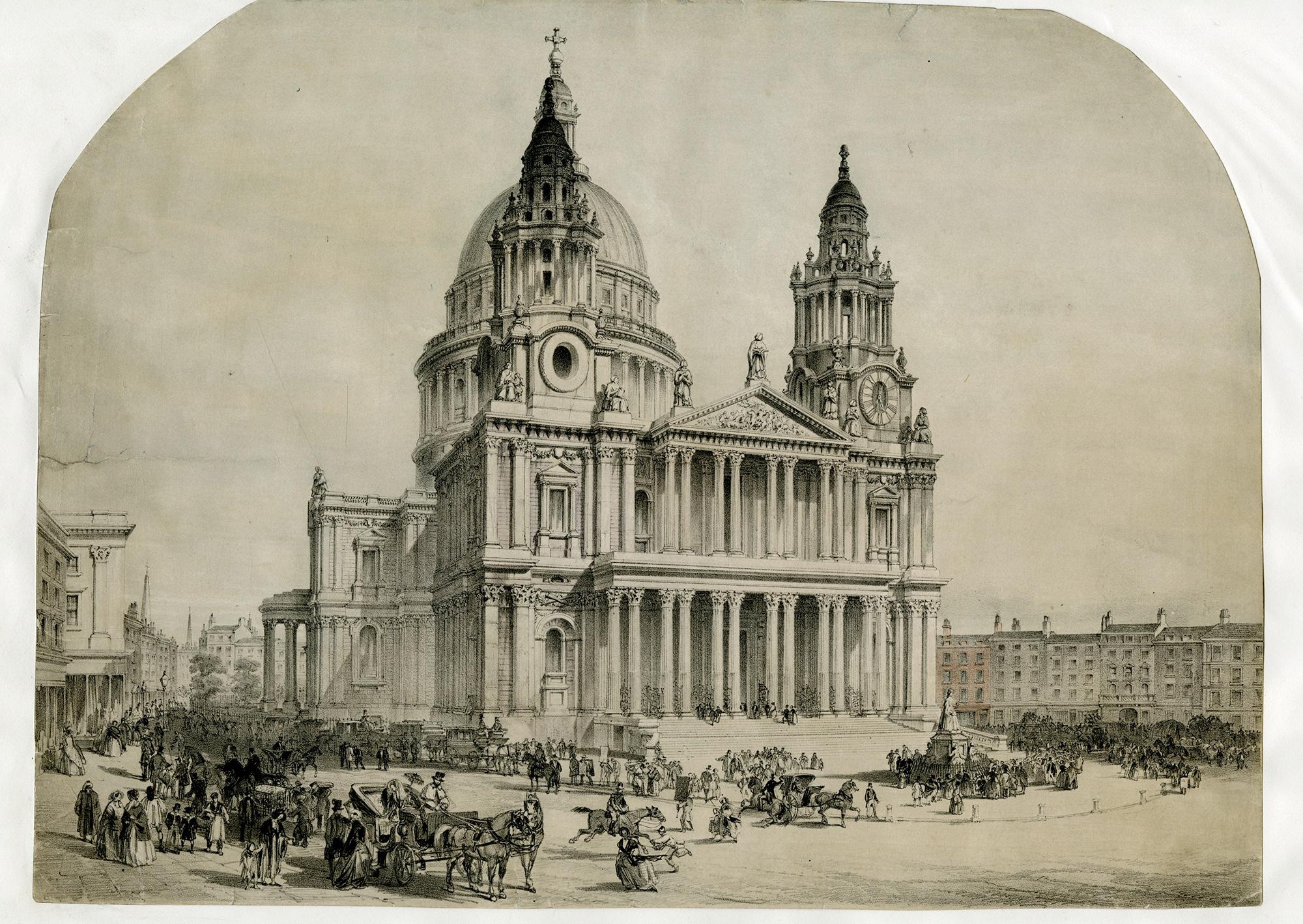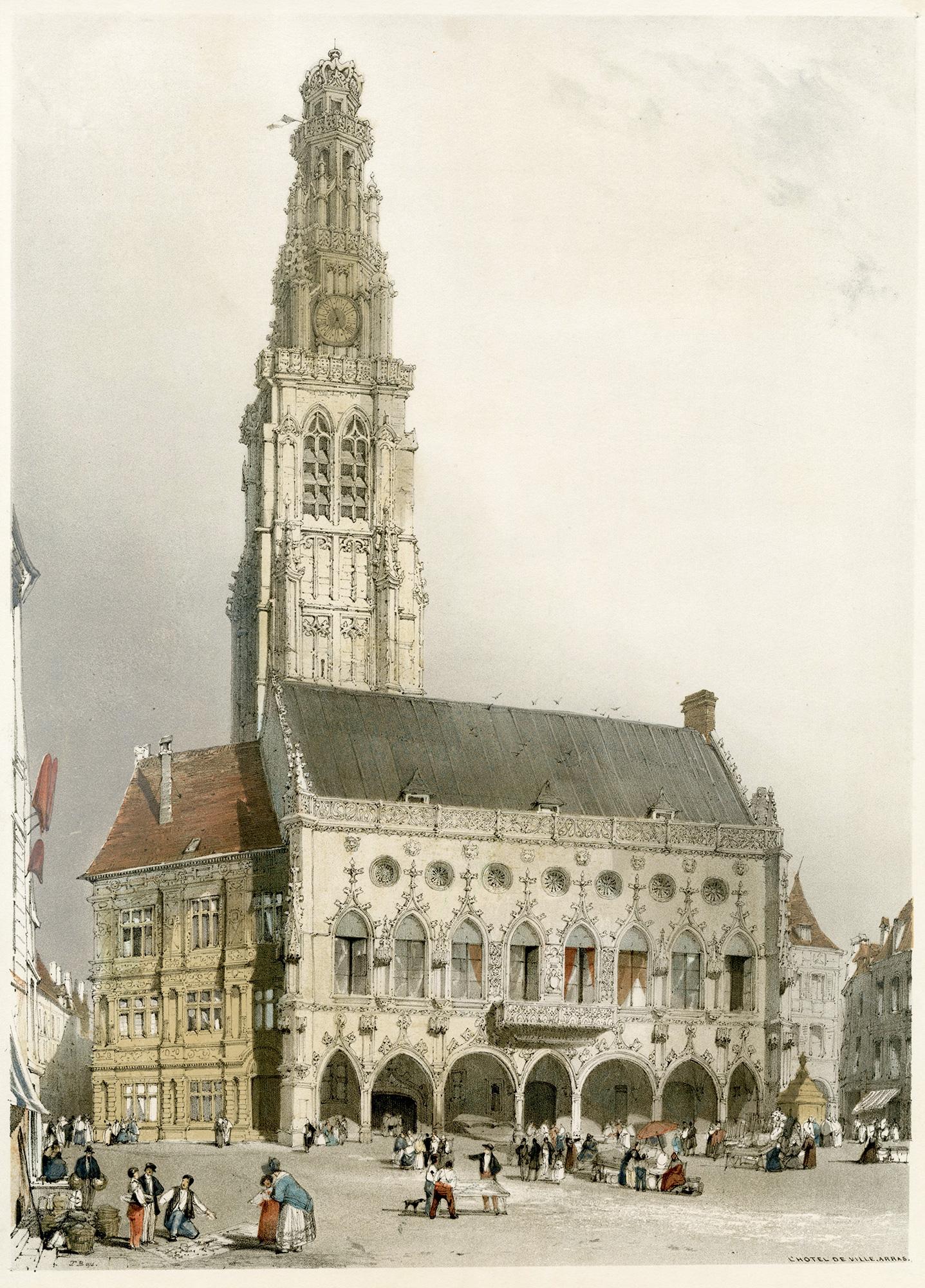Items Similar to 19th-Century Fashion Advertising, Our Styles For The Present Season, Lithograph
Want more images or videos?
Request additional images or videos from the seller
1 of 13
Unknown19th-Century Fashion Advertising, Our Styles For The Present Season, Lithographc. 1880
c. 1880
About the Item
This charming late 19th-century lithograph was produced by Freudenthal & Co for clothing manufacturers, TJ Thomas & Ellis Jones, to showcase the latest fashion. There are 17 styles including the DB Gladstone (after the Prime Minister), Ulster, Demi Sac, Tourist Blouse, Frock Coat and D B Prince Alfred. There’s also a Riding Habit for the lady.
TJ Thomas & Ellis Jones were based at 138 Queen Victoria Street, London, and little is known about their store. It was home to a “meeting of Welshmen'' in 1881 and was dissolved in 1882. The advertisements were folded so maybe they were designed to be given out as an insert or distributed through the press.
Framed nicely and glazed.
Established in 2017, Brave Fine Art is a premier English art dealership based in Cheltenham with clients including national galleries and country estates. Our team includes a conservator, logistics specialist and art historian. Over 1,000 paintings have been transported to the US and Canada safely with hundreds of glowing reviews.
We set our prices fairly from the start as we prefer to sell quickly and continually evolve the collection. Around 40 new discoveries are added every month. If you have any questions at all, we’d love to hear from you.
- Creation Year:c. 1880
- Dimensions:Height: 24 in (60.96 cm)Width: 28.5 in (72.39 cm)
- Medium:
- Movement & Style:
- Period:
- Condition:Some darker areas, particularly along the fold but otherwise fine.
- Gallery Location:Cheltenham, GB
- Reference Number:1stDibs: LU2328211651672
About the Seller
5.0
Platinum Seller
These expertly vetted sellers are 1stDibs' most experienced sellers and are rated highest by our customers.
Established in 2017
1stDibs seller since 2023
122 sales on 1stDibs
Typical response time: <1 hour
- ShippingRetrieving quote...Ships From: Cheltenham, United Kingdom
- Return PolicyA return for this item may be initiated within 14 days of delivery.
More From This SellerView All
- 18th-Century Engraving, Ancient English DressesLocated in Cheltenham, GBThis late 18th-century engraving from Thomas Bankes’ ‘New and Authentic System of Universal Geography’ depicts the evolution of ladies' fashion between 1590 and 1630. In this unusua...Category
18th Century English School Figurative Prints
MaterialsPaper, Engraving
- George Sidney Hunt After Edwin Long RA, In the Wilderness, EngravingLocated in Cheltenham, GBThis late 19th-century mixed-method engraving by George Sidney Hunt (1856-1917) after Edwin Long RA (1829-1891) is one in a series of three depicting the Old Testament story of Jephthah. Here, we see Jephthah’s daughter contemplating her fate during a two-month sojourn in the wilderness. The heart-rending story of Jephthah captured Victorian minds and inspired artist Edwin Long to produce three exhibition pieces, which are now held at the Russell Cotes Art Gallery & Museum. Prior to a fearsome battle with the Ammonites, Jephthah, a leader in Isreal, committed a vow to God that he’d make a sacrifice if his armies were triumphant. “whatever comes out of the door of my house to meet me when I return in triumph from the Ammonites will be the Lord’s, and I will sacrifice it as a burnt offering...Category
19th Century Academic Figurative Prints
MaterialsPaper, Engraving
- Albert Kruger After Max Liebermann, The Flax Barn at Laren, EtchingLocated in Cheltenham, GBThis late-19th-century etching by German draughtsman Albert Kruger (b. 1858) is after a painting by Max Liebermann (1847-1935). The rhythmical monotony of the spinners, organised like a rigid machine, echoes through the low barn. Youths, hunched by square windows, wind flax onto spindles. While women stand in clogged feet, working tirelessly with aching bones. Liebermann captured their daily grind with aplomb, avoiding sentiment in favour of laborious reality. Yet, amid this harsh environment, he celebrates their efforts. The composition conveys determination with its lines and strong verticals while the atmosphere is one of steel rather than tortuous circumstance. Liebermann was a realist yet he found light among the ordinary. Originally published in The Art Journal...Category
1890s Victorian Interior Prints
MaterialsPaper, Etching
- Axel Wallert, Seated Woman With Mandolin, EtchingLocated in Cheltenham, GBThis exquisite early 20th-century etching by Swedish artist Axel Wallert (1890-1962) depicts a seated woman playing the mandolin. It’s brimming with style yet captured with sensitivi...Category
1910s Post-Impressionist Figurative Prints
MaterialsPaper, Etching
- Walter Hancock’s Enterprise Steam Omnibus, 19th-Century Hand-Coloured LithographLocated in Cheltenham, GBThis charming mid-19th-century hand-coloured lithograph depicts the ‘Enterprise Steam Omnibus’, the most successful steam carriage of its period. In the early 19th century, long-distance travel was predominantly undertaken by horse-drawn carriages. Yet, every so often, the clitter-clatter of hooves was abruptly overshadowed by the whir of steam-powered technology. From around 1801, several plucky inventors began developing carriages which could propel themselves via steam. The majority were notoriously unreliable, often breaking down, too slow to be practical, and occasionally exploding. The first steam-powered carriage, invented by Richard Trevithick of Cornwall, made its debut in 1801. It was known as ‘The Puffing Devil’ or ‘Captain Dick’s Puffer’ and said to cause quite a fright when trundling towards you. But this, like several others, couldn’t sustain the rigours of regular long distance trips, which were required to support the cost of running them. Walter Hancock’s (1799-1852) carriages were different. They became the first to run regularly - initially from Stratford and London via the ‘Infant’, a ten-seater bus, and in 1833, between London Wall and Paddington via ‘The Enterprise’, which we see here. Hancock’s machines were revolutionary due to his patented steam boiler (which had less risk of exploding). The Enterprise also had a pioneering suspended engine along with several other clever additions. Driving it was a tricky affair with three operators required - one to steer and control the speed, a second to monitor the boiler’s water level, and a third to maintain the fire. It’s unclear how the three communicated over the omnipresent din. In total, Hancock’s machines carried 12,761 passengers across 4,200 miles, an incredible achievement given the constraints of the day and the condition of the roads. The Enterprise was lauded in Europe and the US, with this particular image featuring in the New York press. The lithograph is based upon an earlier engraving...Category
Mid-19th Century English School More Prints
MaterialsPaper, Lithograph
- James Stephanoff, Portrait Of Miss Smernove, Oil PaintingBy James StephanoffLocated in Cheltenham, GBThis charming portrait of Miss Smernove by British artist, James Stephanoff (1784-1874) is rendered with a masterful touch. It depicts the confident young lady wearing a white high-w...Category
Early 19th Century English School Portrait Drawings and Watercolors
MaterialsPaper, Watercolor
You May Also Like
- St. Paul's From Ludgate Hill, from Original Views of London As It IsBy Thomas Shotter BoysLocated in Middletown, NYLithograph with hand tinting on heavy wove paper, full margins. Significant condition issues in the margins which include adhesive residue, edge tears and minor edge losses. The image area is clean with minor mat tone, however, colors are slightly attenuated. The verso shows moderate uneven toning. Issues primarily exist outside of the image area. This large and lively work was printed by Charles Hullmandel. _______ The images in Boys's 1842 portfolio, Original Views of London...Category
Mid-19th Century English School Landscape Prints
MaterialsWatercolor, Handmade Paper, Lithograph
- PARIS: Porte Rouge Notre Dame & Rue des MarmousetsBy Thomas Shotter BoysLocated in Middletown, NYLithograph in colors with engraving on buff wove paper. Each of the two images measures 10 3/4 x 6 5/8 inches (271 x 167 mm), with the sheet measuring 14 1/4 x 20 1/2 inches (360 x 5...Category
Mid-19th Century English School Landscape Prints
MaterialsHandmade Paper, Lithograph
- College of Physicians, from Ackermann's "Microcosm of London."By Thomas RowlandsonLocated in Middletown, NYPugin, Augustus Charles & Rowlandson, Thomas (after). College of Physicians, from Ackermann's "Microcosm of London." London: Rudolph Ackermann, 1808. Hand-colored lithograph, 9 1/4 ...Category
Early 19th Century English School Interior Prints
MaterialsWatercolor, Handmade Paper, Lithograph
- South Porch of Chartres CathedralBy Thomas Shotter BoysLocated in Middletown, NYLondon: Charles Joseph Hullmandel, 1839. Oil stick color lithograph on cream wove paper, 14 3/16 x 11 inches; (360 x 280 mm), full margins. Scattered light yellow spots of discolora...Category
Mid-19th Century English School Figurative Prints
MaterialsOil Pastel, Handmade Paper, Lithograph
- North View of St. Paul's Cathedral, London English School, 19th centuryLocated in Middletown, NYLondon: Tallis & Co., 1851 Lithograph on cream wove paper, 11 3/4 x 15 3/4 inches (297 x 398 mm), with vaulted margins at the top sheet edge. Significant toning, and some edge wear. ...Category
Mid-19th Century English School Interior Prints
MaterialsLithograph, Handmade Paper
- L'Hotel de Ville, ArrasBy Thomas Shotter BoysLocated in Middletown, NYLithograph in colors on card stock (as issued), 15 x 10 5/8 inches (380 x 268 mm), full margins. In good condition with some minor toning and some extremely minor and unobtrusive edg...Category
Mid-19th Century English School Landscape Prints
MaterialsLithograph, Handmade Paper
Recently Viewed
View AllMore Ways To Browse
Antique Present
Century Prime
Lithograph Advertising
English Print Set
19th Century Lithograph Framed
Antique Fashion Prints
Lithograph Canada
Canadian Lithograph
Antique Safes From 19th Century
The Little Review
London 19th Century Lithograph
Store Advertising
Antique Advertisement
Antique Advertisements
English Country Estate
Antique Paper Press
English Advertising
Advertising 19th Century





